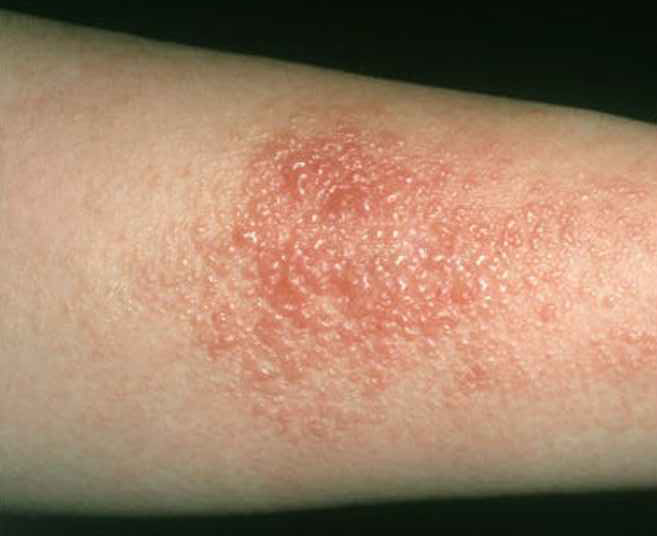CONTACT DERMATITIS

What is contact dermatitis?
Allergic* contact dermatitis is an inflammatory skin reaction caused when the skin comes into contact with certain substances called allergens. The skin reaction involves redness, inflammation, scaling, blistering and crusting. The involved area is often itchy and sore. The skin reaction is a delayed reaction that occurs about 48 hours after contact with the allergen. This delayed reaction is due to recruitment of the body’s delayed-immune response system. The lesions are well-defined and localized to the area of the skin that came into contact with the allergen. Occasionally, the inflammation can spread to surrounding tissue. Diagnosis is made based on symptoms and history, but occasionally a patch test can be done. A patch test involves applying the offending allergen to the patient’s skin and documenting whether or not a response forms.
What causes contact dermatitis?
Allergic contact dermatitis is caused by the body’s systemic response to an outside allergen. Each individual’s immune system is unique and some immune systems are “primed to attack” certain allergens while others are not. As mentioned above allergic contact dermatitis is a delayed reaction that requires multiple exposures to an allergen before the body is “primed to attack” and cause an inflammatory reaction. When the body first comes into contact with a strong allergen, such as poison ivy, it takes the body a week to build up antibodies against it. However, in the second encounter with poison ivy the body has antibodies stored up and a dermatitic reaction occurs within 48 hours. Once the body is sensitized to an allergen the skin will react whenever it comes into contact with it.
There are many types of allergens, common ones include antibiotics, metals in jewelry or belt buckles, certain dyes and plants.
How is contact dermatitis treated and managed?
Acute skin reactions of contact dermatitis resolve without intervention, but symptoms such as itching and inflammation can be managed with topical steroid creams. If the reaction is severe, oral corticosteroids can be taken to suppress the immune response. Because contact dermatitis can’t be cured the goal of therapy is avoidance of the allergen.
*Contact dermatitis can be broken down into two variants, allergic contact dermatitis (discussed here) and irritant contact dermatitis (ICD). ICD looks similar to ACD but is caused by skin exposure to irritant chemicals such as detergents, dyes and acids. The hands are most commonly affected in ICD and those at risk include hairdressers, home-cleaners, etc.
References:
Wolff K, Johnson, RA. Fitzpatrick’s Color Atlas and Synopsis of Clinical Dermatology. Sixth Edition. 2009.


